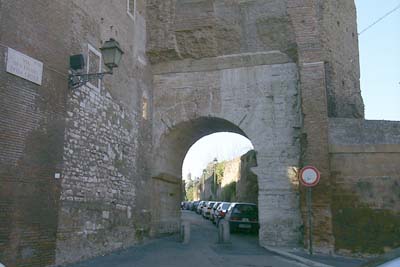
Arco di Dolabella

|
Originally it was one of the city entrances built in the walls protecting the city in Republican epoch and restored by Augustus. Dolabella and Silanus (10 A.D.) were the magistrates responsible for reconstruction of this gate which might bore the name Porta Celimontana. In occasion of restoration of another monument, aqueduct of Nero, conducted by Septimius Severus and Caracalla, the Arch of Dolabella and Silanus was incorporated in the tract of the aqueduct. It survived till our days, while the constructions of which it ever made part did not. Near by the arch is a chiesa San Tommaso in Formis, built in the 19th-11 th centuries in Romanesque forms. By the moment it lost its original character, paintings representing the missions of the Trinitarians in eastern countries, marbles, lacunar ceiling, portico and a bell-tower. It is mostly noted for being a burial place of St John of Matha, founder of the Order of Trinitarians. The latter possessed a big hospital, which occupied the bigger part of Villa Celimontana starting from 1207. The Chiesa di S.Tommaso in Formis also belonged to them and was the general seat of the Order, created by St John of Matha and dedicated to the cult of Trinity and to redemption of slaves. They were picking alms and went to the Muslim countries to negotiate the freedom of the Christians closed in the prisons. Besides, the order was giving assistance to all the poor who needed help and offered them their hospital. Till the 1389 it was prosperous, but after a series of ups and downs was abandoned. The construction was demolished and the territory was adapted for the villa. Only two pieces remind about it: a marble Romanesque arch and a Gothic one.
|